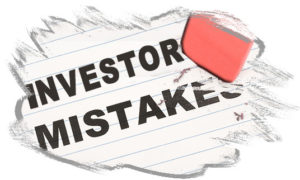7 Most Common Investment Mistakes
- Buying an investment property without thoroughly looking at capital growth and rental return potential. Research is critical when buying an investment property. Most real estate institutes and real estate listing websites throughout Australia provide free online information about the long-term performance of individual suburbs in terms of capital growth, which is a good resource for investors.
- Buying an investment property close to home rather than looking at investment opportunities throughout Australia. That could mean that they achieve below average capital growth rates and miss out on potential property hot spots in other locations.
- Failing to seek independent information. It is important to seek out people who own several investment properties and ask them how they managed to build their portfolio. They can provide very important tips on how to avoid simple traps and pitfalls when buying investment properties.
- Managing the property yourself. This puts the investor at a very high risk of selecting the wrong tenant as they cannot undertake the necessary background checks on tenants as a reliable property management company.
- Not undertaking a full assessment of the true cost of buying and holding the property. For example, if the property is an apartment, there are additional cost issues compared to buying a stand-alone house (such as strata fees). In addition, if the property is old, it many incur higher maintenance costs.
- Selecting the wrong home loan (i.e. principal and interest), which is typical for an owner occupier home. Instead investors should consider interest-only loans, which will help increase cash flow.
- Buying a property in a location that is not attractive to tenants i.e. not close to amenities such as shops or transport. Investors can also buy a property in an area where there is an oversupply of properties meaning rents will be low and capital growth rates limited.

